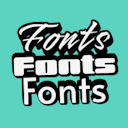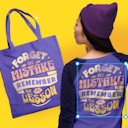Product
Templates
Resources
Company
Home
Blog
Design
Break the portfolio mold: Graphic design portfolio tips
Break the portfolio mold: Graphic design portfolio tips

When crafting a graphic design portfolio, your goal isn’t to follow the same template as everyone else—your goal is to present yourself in the best possible way. And this is unique for everyone. So to help you revamp or create a portfolio, we’ve curated this guide of graphic design portfolio tips.
In this guide, we’ll share insights from Juan Felipe Cadavid, design mentor and award-winning designer with over 10 years of experience in the industry, all to help you create a design portfolio that breaks the mold with unique, impactful, and informational content.
Table of contents
- Before getting started: How to approach your portfolio
- Getting started: Establish a strong foundation
- 5 tips for a standout digital design portfolio
- Complement your website with a downloadable digital graphic design portfolio
- Graphic design portfolio examples
- How to reach more clients/hirers
- Video: Make a better graphic design portfolio and get more clients (with Juan Felipe Cadavid)
What you’ll learn
A great creative portfolio does more than just showcase your work—it tells a compelling story about your skills, creative process, and unique design perspective. This guide will help you craft a portfolio that not only highlights your best work but also sets you apart from the competition.
We’ll cover how to present your projects in a way that demonstrates your problem-solving abilities, creative thinking, and the "why" behind your design choices. To help you attract more opportunities, we’ll also share strategies for expanding your reach, from optimizing your online presence to smart networking techniques.
You’ll learn how to:
- Lay the foundation for a strong portfolio and optimize it for search visibility.
- Structure your portfolio for clarity and impact.
- Leverage your unique personality to communicate your story.
- Clearly highlight your skills, expertise, and how you work.
Event info: If you need help with your portfolio, we host free portfolio reviews—Subscribe to our Luma calendar to sign up for future portfolio review events! In these reviews, you can expect honest, actionable, and direct feedback from professionals in the design industry.
Before getting started: How to approach your portfolio
Whether you're building your first portfolio or updating an existing one, the process can feel just as daunting. To make it easier and more effective, focus on what truly matters—your growth, strengths, and unique perspective. Here are three key considerations to guide you:
1. Embrace the reality: There will always be better designers
It’s easy to fall into the comparison trap, but the truth is, there will always be designers out there creating work that surpasses yours. Acknowledging this reality will be your key to success. It allows you to let go of perfectionism and focus on what makes your work valuable: your authenticity and perspective.
Let your portfolio reflect your creative voice, values, and aspirations. Don’t be afraid to infuse your personality into the design, copy, and overall presentation.
2. The goal: Don’t measure—evolve
Your portfolio shouldn't be a tool for self-measurement. Instead, see it as a canvas for showcasing how you’ve grown. It’s not about proving your worth but expressing your evolving skills, style, and creative confidence.
And if you're looking for new skills to learn, reference our suggested list of 10 graphic design skills to learn this year.
3. Grow in your strengths
Rather than chasing trends or trying to emulate others, focus on growing in your own strengths. Your portfolio should emphasize what you do best, whether that’s illustration, UX design, branding, or something else entirely. Play to your strengths and let them shine through clear, consistent presentation and storytelling.
Still looking to lock in your design niche? Watch the video below for helpful tips on how to identify it.
Getting started: 2 tips to establish a strong foundation
Before diving into curation and design, setting up your portfolio on the right platform with a strong foundation is key. Here are a few essential steps to get started:
1. Choose the right platform and domain
Your portfolio should live on a platform you fully own, not just social sites like Instagram, Behance, or Dribbble.
Many website builders like Squarespace, Wix, and Carrd offer user-friendly, templated solutions, while WordPress and HubSpot will provide more flexibility. The only downside you may experience with hosting platforms like WordPress is the additional maintenance required as it’s not as simply as hosting sites with pre-made templates.
Here's a breakdown of what you can expect from common website hosts that are used for digital portfolios:
Free plans but with branded domain
These hosting platforms offer customizable templates but limited customization and platform branding are included:
- Wix
- Squarespace
- WordPress
- Carrd (for one-page sites)
- Weebly
Paid plans with a custom domain
These platforms offer a more professional appearance with no platform branding:
Free plans with pre-owned custom domain
These platforms are ideal for those who already own a domain or plan to purchase a specific available domain and want free hosting. But there may still be limitations with a free plan so it’s always best to check exactly what’s included so you know if you’ll have access to everything you need:
Investing in a custom domain adds professionalism and ensures your URL is clean and memorable—avoid free hosting options that add unnecessary branding or long URLs. It can be as simple as yourname.com.
2. Optimize navigation for desktop and mobile use
Most hiring managers and clients will view your portfolio on a laptop or desktop, so prioritize usability. Use a full-text menu for navigation rather than a hamburger menu (three horizontal lines), which is better suited for mobile interfaces. Clear, intuitive navigation ensures visitors can explore your work effortlessly.
5 graphic design portfolio tips to break the mold
As we cover above, creating an exceptional portfolio is more than just showcasing your work—it’s about telling a compelling story that captures your creative process, highlights your strengths, and reflects your unique style. A strong portfolio showcases the key information, such as your work and experience but also how you think, solve problems, and evolve as a designer.
To help you achieve this, here are five essential graphic design portfolio tips with real-life visual examples from our live portfolio review event. As you build or refine your portfolio, follow each of these tips, audit your portfolio, and ensure it aligns with each of them. You’ll need to approach your portfolio with a critical eye.
The images below attached to each of the five tips are real-life examples from our last portfolio review shared by designers looking to revamp their own portfolios. Check out the notes given to the designers by Juan Felipe Cadavid and be sure to request to join future portfolio reviews.
1. Stand out by adding your unique personal touch
Your portfolio should differentiate you from the crowd by highlighting what makes your work and style unique. Consistency in design, thoughtful presentation, and a memorable personal touch can make all the difference.
Design tip: Use your portfolio to showcase niche skills or passion projects. These often reflect your genuine interests and can make you stand out from the crowd.
Do
Use your design filter: Apply a consistent visual style and tone across your portfolio to make your work feel cohesive and memorable.
Innovate by learning new skills: Stay adaptable and demonstrate your willingness to grow by incorporating new skills and techniques into your portfolio.
Include results but focus on the story: Showing results is fine, but standing out by effectively telling the story behind the project is what makes a lasting impression.
Don’t
Don’t overlook authenticity: Trying too hard to impress can result in a portfolio that lacks authenticity. Let your genuine style and voice shine through.

Creative, personality-driven digital portfolio layout using retro UI elements and playful visuals to stand out from a Kittl portfolio review event.
2. Structure your digital portfolio effectively
Clear structure and navigation are vital for a positive user experience. A well-organized portfolio makes it easy for viewers to explore your work and understand your creative journey.
Let your projects breathe. Good compositions need air.
”Juan Felipe Cadavid
Do
Use whitespace effectively: Create visual balance and prevent a cluttered design.
Base UX on context: Improve side navigation and explain your projects in dedicated pages. Make it easy for viewers to explore your portfolio intuitively.
Use hierarchy of information: Structure your content clearly. Highlight the most important details first and guide the viewer through your work in a logical flow.
Don’t
Don’t overcrowd your portfolio: Avoid stuffing too many projects into your portfolio. Prioritize quality over quantity.
Don’t ignore navigation and UX: A poorly structured portfolio is frustrating to explore. Avoid confusing navigation or over-complicated interactions.

Before-and-after brand concept layout illustrating how simplifying text and improving hierarchy enhances visual impact from a Kittl portfolio review event.
3. Showcase your talents
Your portfolio should visually demonstrate your skills rather than simply describing them. Use detailed visuals from previous work and/or personal projects to curate case studies that make your abilities clear. And when you do this, show, don’t tell. But if you tell, always make sure you show.
To curate a case study, don't just include visuals. Showcase your design process, highlight your role, explain the problem you solved, and the outcome achieved. It'll be even more impactful if you include any challenges you faced such as budget restrictions and how you overcame them.
Showing results is fine, but standing out exclusively by results is insanely difficult.
”Juan Felipe Cadavid
Do
Show your struggles and how you overcame them: Include challenges you faced during projects and explain how you solved them. This demonstrates resilience and problem-solving skills.
Don’t
Don’t let weak presentation dilute your work: Even strong case studies can lose impact if the portfolio design itself is weak. Ensure you're presenting your case study clearly and effectively but also in a way that mimics your stylistic design choices.

A visual critique highlighting the lack of before-and-after comparisons in a design portfolio from a Kittl portfolio review event.
4. Highlight what makes your work compelling
Your portfolio should emphasize what makes your work truly stand out. Whether it’s your unique design style, creative problem-solving, or innovative user flows, make sure the most compelling aspects of your projects take center stage.
Do
Explain creative decisions: Don’t just present the final product—share your thought process. Speak for the project, explaining why you made specific design choices.
Don’t
Don’t rely on superficial descriptions: Simply listing tools or techniques used is not enough. Share insights into your creative process.

Visual example of using infographic-style UI to simplify complex information with modular cards and 3D elements from a Kittl portfolio review event.
5. Balance between innovative and informative
A compelling portfolio strikes a balance between creativity and clarity. While visual flair is important, it shouldn't come at the cost of clearly communicating your story, experience, and skills. Displaying visuals without context can leave viewers guessing. And vice versa—don't over communicate and provide too much text at the expense of your visuals.
Do
Maintain good rhythm over brevity: Prioritize a smooth, engaging narrative over keeping things short. Quality storytelling is more compelling than rushed, minimal explanations.
Don’t
Don’t make it all about results: While metrics are valuable, an overemphasis on results can make your portfolio feel impersonal. Balance it with compelling storytelling.

A critique of UX case studies that prioritize detailed user personas over showcasing the final product, emphasizing the need to balance innovation and information from a live Kittl portfolio review.
Complement your website with a downloadable graphic design portfolio
While a website portfolio is essential for online discoverability, having a downloadable version offers added flexibility—especially when sharing your work directly with clients or during job applications.
Why use both?
- A website portfolio makes your work easily accessible online, increasing your visibility and helping potential clients or employers discover you through search engines.
- A downloadable portfolio is a polished, curated presentation you can send via email, attach to applications, or share in client meetings.
Include a downloadable link directly on your website portfolio. This way, visitors can download a PDF or presentation version to keep on hand, making it easy for them to share your work internally with their team.
Graphic design portfolio examples
Find a nearly endless supply of customizable portfolio templates in Kittl. Save time and use these templates to easily build a slide-based presentation that mirrors your website’s design and showcases your work in a professional, downloadable format.
To create consistency, you can use a brand kit in Kittl to design your downloadable portfolio with the same branding, color palette, and typography as your website. This ensures a seamless, recognizable experience whether someone views your portfolio online or offline.
Below are just a few examples of the templates you can get started with now:
How to reach more clients/hirers?
A great portfolio is only valuable if the right people see it. Beyond submitting it with job applications, there are many ways to expand your reach and land more work. There’s no one-size-fits-all approach, so explore beyond this list and find creative ways to showcase your work to potential clients and hiring managers.
Here are five ways you can expand your reach and attract more clients:
1. Optimize for visibility on search engines (SERPs)
Even if you’re not an SEO expert, there are simple steps you can take to make your portfolio more discoverable:
- Use SEO-friendly titles and meta descriptions: When naming your portfolio pages and individual projects, be clear and descriptive. Instead of vague titles like "Project 1", opt for something specific and searchable. For example: "Minimalist Branding for Sustainable Fashion Startup."
- Add descriptive alt text to images: Since search engines can’t “see” images, including alt text improves both accessibility and SEO. For example, instead of "Portfolio image 1", use "Homepage redesign for eco-friendly apparel brand with intuitive navigation and clean typography."
- Optimize page load speed: A slow-loading portfolio can hurt your rankings. Compress large images regularly check for site load speed problems as you add additional content.
- Leverage internal linking: If you reference other projects, link to them using descriptive anchor text. For example, "See the full UX case study here" is more effective than "click here."
Watch the discussion between Drew, Production Manager at Kittl, and Will from How&How Studio for writing tips and insights into how you can integrate SEO into your copy in the video below. This will help you on your journey to optimizing your website portfolio so that you can be seen and get more work.
2. Leverage social media
Social platforms are key to promoting your portfolio and attracting potential clients. Start sharing your work regularly by posting project teasers on LinkedIn, Instagram, and Twitter, and linking back to your full portfolio. Here’s a few social media tips to keep in mind:
- Use relevant hashtags: Tags that are directly related to your project will help increase discoverability.
- Engage with industry accounts: Commenting thoughtfully on posts from design leaders boosts your visibility.
- Repurpose content for different platforms: Turn case studies into carousel posts or short-form clips on Instagram or TikTok to reach a wider audience.
Share your creations on Instagram and tag Kittl for a chance to be featured on our account—boost your reach and grow your brand visibility.
3. Network with intent
Attending design conferences, engaging in online communities, and connecting with potential clients in meaningful ways can open unexpected doors. And while business cards may seem old-school, they’re still just as valuable as ever.
Handing someone your business card at an event signals professionalism and confidence—it shows you’re serious about your work. But more than that, it offers an immediate glimpse into your design style. A well-designed card leaves a lasting impression, especially when paired with a QR code linking directly to your portfolio. Instead of asking people to search for you later, you’re putting your work in their hands instantly.
And when they need a designer? That first impression could be the reason they reach out to you instead of starting their search from scratch.
Don’t have a business card yet? Use our business card maker to design a unique card that aligns with your personal brand. With a free account, you can start with a nearly endless collection of pre-made templates or start from scratch. Use this QR code hack to maximize the chances of your card helping you secure work.
4. Ask for referrals and testimonials
Satisfied clients are your best advocates, so don’t hesitate to ask for testimonials and referrals. Even if a project didn’t go as smoothly as you’d hoped, requesting feedback is still valuable. It helps you identify areas for improvement and shows clients that you take their experience seriously.
Being open to feedback can also foster goodwill, potentially preventing negative reviews and maintaining a positive reputation.
5. Think outside the box
Keep trying to break the mold and think outside the box to stand out from the competition. A great example of landing work through an unconventional approach is Robert Pirosh’s infamous letter.
Despite having no prior screenwriting experience, he landed three interviews and was ultimately hired. How did he do it? After deciding to break into the film industry, he showcased his skills and ingenuity by crafting a well-worded letter that highlighted his passion and potential—then sent it to as many industry contacts as he could find.
For more tips on how to create a graphic design portfolio and attract clients, watch the video below where Juan Felipe Cadavid, mentor and award-winning designer with over 10 years of experience in the industry shares his top advice for graphic designers.
Related articles

Tutorials
How to build a personal brand: 20 tips for designers and creators
For designers and creators, building a strong personal brand isn’t just about standing out – it’s a ...

Design
What makes a good logo? Tips for effective branding
Logos are the heart of a brand’s identity—communicating everything from its offerings, personality, ...

Tutorials
A freelancer’s guide to designing business cards online for clients
As a freelance graphic designer, clients often turn to you for more than just a logo—they need a com...

























